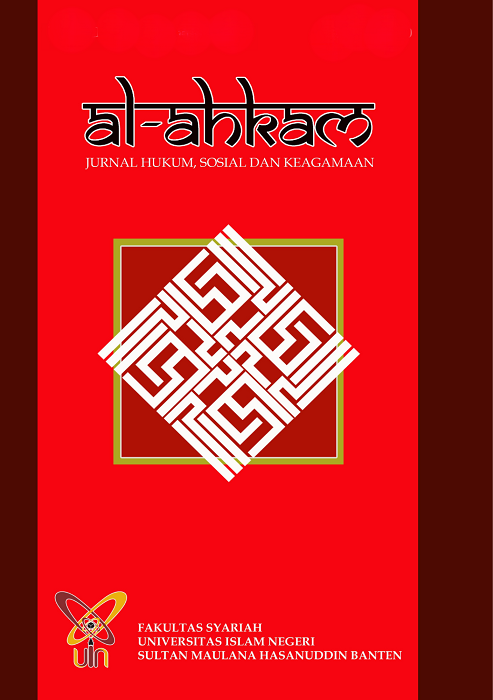Tu'a Golo's role in resolving land disputes between Poka indigenous people, Longko Village, Wae Ri'i District, Manggarai Regency
DOI:
https://doi.org/10.37035/ajh.v19i1.8962Keywords:
Tu'a Golo, Land Dispute,Custom SocietyAbstract
The Poka Indigenous People are part of the Manggarai community, also practicing matters related to Manggarai culture such as resolving land disputes between community members. This research was conducted to find out the role of Tu'a Golo in resolving disputes among the Indigenous People of the Poka Village, Longko Village, Wae Ri'i District, Manggarai Regency. Based on the results of the study, the role of Tu'a Golo in the Poka Indigenous People is to: Regulate and manage the socio-economic and cultural life of the community and resolve land boundary disputes of the Poka indigenous people. The role of Tu'a Golo in resolving land boundary disputes is as follows: 1) The role of Tu’a Golo in the dispute between Benyamin Bago and the Manggarai Regency Government. In this case, Tu'a Golo was presented by the police only as a witness. 2) The role of Tu’a Golo in the dispute between Alosius Sema and Benyamin Bago, namely: receiving and assessing community reports regarding the disputed dispute, leading the lonto leok event in resolving cases, summoning tu'a-tu'a panga and witnesses, leading the event of reviewing the location of cases, deciding cases, being a witness in a case. The decision of the old golo regarding the land boundary dispute between Alosius Sema and Benyamin Bago has binding force and applies to the parties, but is not final. According to the researcher, Tu’a Golo decision in the dispute between Alosius Sema and Benyamin Bago fulfilled the element of justice.
Downloads
References
Apriyani, R. (2018). Keberadaan Sanksi Adat Dalam Penerapan Hukum Pidana Adat. Jurnal Hukum PRIORIS, 6(3), 227–246.
Martin Kryger, Law as Tradition, Journal of Law and Philosophy, Vol. 5 No. 2 August 1986.
Mathias Reimann, The Historical School Against Codification: Savigny, Carter, and the Defeat of the New York Civil Code, American Journal of Comparative Law, Vol. 37, 1989.
Ngoro, Adi M. Budaya Manggarai Selayang Pandang. Ende: Nusa Indah, 2016.
Peraturan Menteri Agraria dan Tata Ruang/Kepala BPN Nomor 11 Tahun 2016 Tentang Penyelesaian Kasus Pertanahan.
Sabardi, L. (2014). Konstruksi Makna Yuridis Masyarakat Hukum Adat Dalam Pasal 18B UUD RI Tahun 1945 Untuk Identifikasi Adanya Masyarakat Hukum Adat. Jurnal Hukum & Pembangunan, 44(2), 170. https://doi.org/10.21143/jhp.vol44.no2.19
Salim, M. (2016). Adat Sebagai Budaya Kearifan Lokal Untuk Memperkuat Eksistensi Adat Ke Depan. Al Daulah: Jurnal Hukum Pidana Dan Ketatanegaraan, 5(2), 244–255. https://doi.org/10.24252/ad.v5i2.4845
Steven Winduo, Costumary Law is A Living Law, www.ichcap.org, diakses pada tanggal 31 Maret 2023, jam. 12.00.
Syahbandir, M. (2010). Kedudukan Hukum Adat dalam Sistem Hukum (The Structure of Customary Law In Indonesia’s Legal System). Kanun, 4(50), 1–13.
Syamsudin. (2008). Beban Masyarakat Adat Menghadapi Hukum Negara. Jurnal Hukum Ius Quia Iustum, 15(3), 338–351. https://doi.org/10.20885/iustum.vol15.iss3.art9
Syofyan Hadi. "Hukum Positif dan The Living Law (Eksistensi dan Keberlakuannya Dalam Masyayarakat)”. DiH Jurnal Ilmu Hukum Universitas 17 Agustus 1945, Surabaya, Vol. 13 No.26, Agustus 2017 DOI https://doi.org/10.30996/dih.v0i0.1588, 259-266
Undang-Undang Dasar Republik Indonesia Tahun 1945
Downloads
Published
Versions
- 2023-07-27 (2)
- 2023-07-01 (1)
How to Cite
Issue
Section
License
Copyright (c) 2023 Marsianus Ampat, Yustinus Pedo, Ernesta Uba Wohon, Stefanus Don Rade

This work is licensed under a Creative Commons Attribution-ShareAlike 4.0 International License.










